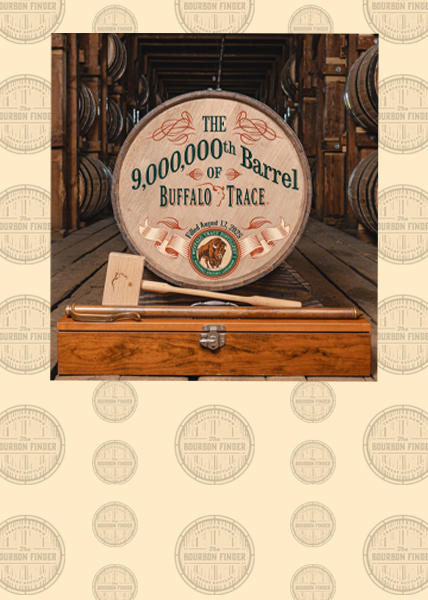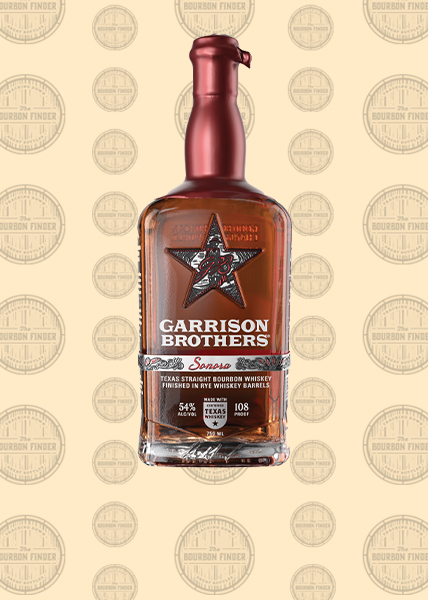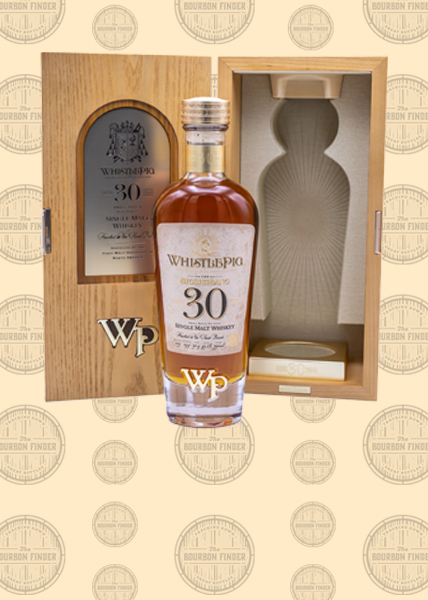Maker’s Mark Wood Finishing Series: BEP
Today we conclude the Maker’s Mark Wood Finishing Series by reviewing the final release: BEP. While the nomenclature of this series shifted as it evolved, ultimately each release was based upon a particular stave profile (such as RC6, SE4xPR5, FAE, BRT). While seemingly on-brand with this release, BEP doesn’t actually represent wood finishing staves as the consumer may logically conclude; actually, BEP is an acronym for Barrel Entry Proof. Maker’s Mark chose to celebrate the proof they choose to put their bourbon into the barrel at. As readers of The Bourbon Finder will know, bourbon must go into a barrel at less than 125 proof, as discussed in what is the difference between bourbon and whiskey? While I answer many questions in that article, I think the question of today is simply relating to BEP and how it tastes. Let’s have a look!

Looking to connect? I’m on Instagram or you may reach out to me via Email or Discord if you’d like to discuss bourbon, request reviews, or anything else.
In the video above, Jay and sat down with [now former] Director of Innovation at Maker’s Mark, Jane Bowie. We discuss her career arc, as well as her role as the Director of Innovation for the red wax-dipped brand.
As we can recall from the press release for this final release in the Maker’s Mark Wood Finishing Series, the BEP release is aimed to celebrate the never-changing barrel entry proof of the Loretto, Kentucky distillery.
How does the barrel entry proof (meaning, the proof of the newly-distilled whiskey when it enters the new charred oak barrel to age) tie into the Wood Finishing Series? You’ve got me there. I truly don’t understand it, but here is what the brand has to say:
As the fifth and final limited-edition in this chapter of the Wood Finishing Series, the 2023 Limited Release: BEP was crafted to amplify the balanced wood sugars, softer tannins and lasting finish that can be attributed to the signature Maker’s Mark 110 barrel entry proof. Ten Virgin Toasted American Oak finish staves were used to amplify notes of vanilla and sweet spice that naturally occur from this lower barrel entry proof.
Alright, so the press release tells us that ten virgin American oak staves were used in this release. That helps in the sense that we know it is a wood finished product (as we would hope in the Wood Finishing Series). Before tasting this release I found myself really curious how it would stack up to the previous releases in the series.

Other releases such as FAE and BRT were comprised of two different bottles, each to highlight a different flavor profile. I wonder if consumers will feel a bit cheated with the final release being one bottle. I suppose if the whiskey is great, it won’t matter. Speaking of tasting this release, I think it’s time to pour some and dig in.
Tasting Notes…
Nose – Sweet and classic. A vanilla and caramel sundae that seems to open up adding a dash of mild spice.
Taste – Feels a bit like an amped up Maker’s for sure. The classic Maker’s Mark white fruits, caramel, and vanilla certainly stand out here. A dash of spice works it’s way in as well. There’s custardy dessert note here that seems to play well with the spice, and a faint kick of artificial sweetness.
Finish – A medium finish that rolls off gently. The light fruits dissipate and vanilla and sugar notes hold on long enough to warrant another sip.
Bourbon Finder Grade: B
Final thoughts…
I’ll conclude by sharing first my thoughts on the whiskey, then on the release itself, as there’s some disparity to discuss. First and foremost, the whiskey is fine. It more or less checks the boxes the brand has touted in terms of what the consumer will taste. The quality of the whiskey is–as always–the most important to me. The marketing, gimmicks, and story behind the release doesn’t weigh into my grading in any way, but it’s worth discussing so the consumer stands a chance at understanding what they are paying for.
When I look back on the Wood Finishing Series, immediately I’m reminded of the shocking RC6 release, then the building blocks of SE4xPR5 and FAE-01 and FAE-2, where each release seemed to take a core theme and build at least one bottle release around something noteworthy in the Maker’s Mark abundant tool kit of finishing staves. Then there’s BEP, which was created to celebrate…barrel entry proof. What a digression, and an interesting choice by the brand.
While this certainly reads a bit like an I told you so in reference to the Wood Finishing Series in the post Jane Bowie days at Maker’s Mark, I am intending it to be more of reminder that the earlier releases in this series stood for something that, perhaps, this latest release doesn’t quite resemble. Ultimately, it’s good bourbon, but I can’t help but feel a bit disappointed in the final release of the Wood Finishing Series.
The Bourbon Finder & Weekly Whiskey thanks Maker’s Mark for graciously providing us a sample of their product. Being able to try new things in the whiskey space, without strings attached, is an opportunity we greatly appreciate. Per our review ethos, we provide objective reviews and commentary on media samples of spirits and products; remember, friends, these are the good old days of whiskey!

Our grading system: As mentioned in our About Us page, we’re excited to share bourbon with our friends, family, and readers. There are enough critics, cynics, and curmudgeons in the whiskey world as it is, so our goal is to foster the bourbon community in a positive way by bringing fun and entertaining content whenever possible–as such–we decided that applying precise scores to whiskey was simply too serious for us (and didn’t accurately showcase variability in taste from day to day). We use a simple grade school system to apply a grade to the whiskeys we review because we feel it is indicative of the whiskey’s grade for us on that particular day. A grade of a “B” today may very well be a “B+” or even a “B-” on another day, so rather than focusing on a precise score today that may not stand the test of time, we are just sharing our overall grade of that pour for that one tasting. Pour a bit and enjoy, friends, these are the good old days of whiskey!





Leave a Reply